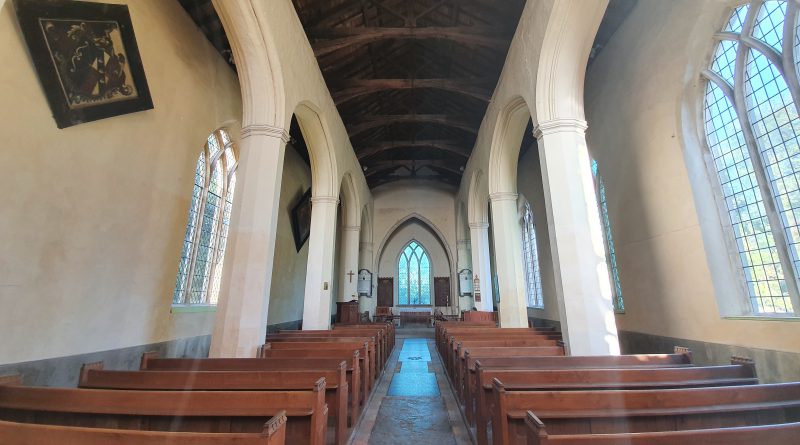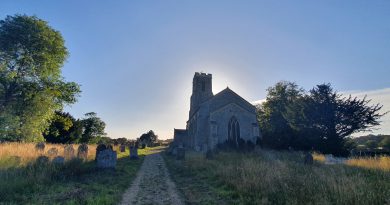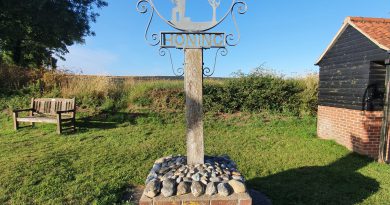Honing – Church of St. Peter and St. Paul (Interior)
Pleasingly, the Church of St. Peter and St. Paul in Honing was open when we visited on a Sunday early evening.
It’s a bright and airy church, although the boxed pews that might have added some extra charm were replaced in the early part of the twentieth century. I accept some people don’t think boxed pews do add character, but there’s something about these almost secretive looking boxes that I find historically attractive.
The chancel was shortened in 1795 when the church was reconstructed, so there is now very little left of it.
Looking back towards the west end of the church. The wooden roof is from 1795, although there was a ceiling underneath it originally, which has since been removed.
I like the flooring, which adds some character, with the tower section closed off with a wooden partition. There was a substantial restoration recently and this does allow members of the public access to the top of the tower, albeit only as part of a pre-arranged guided tour.
The top section of the font is made from Purbeck marble and dates from the thirteenth century, with the lower section dating to the fifteenth century. It’s thought that there has been a church here since the thirteenth century, with the bulk of it being reconstructed during the fifteenth century. That would fit with the dates of the font, so the older part is likely contemporary to the original church that was here and the rest is from the rebuilding.
These are some of the narrowest aisles that I’ve seen in a church and I can’t imagine that this was the original construction plan. It’s likely another one of the changes that were made in the 1795 reconstruction and it does feel out of proportion. There are two possibilities, one is that the walls were rebuilt and pushed inwards and the other is that the arcade has been moved outwards towards the wall.











